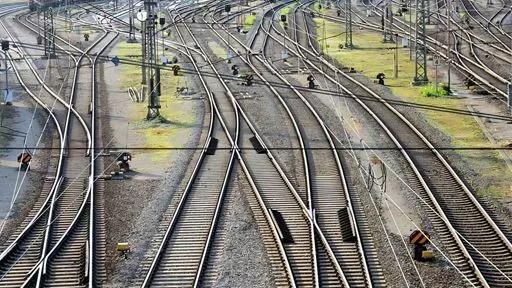Indian Railways, the lifeline of India, is undergoing a remarkable transformation. The world’s fourth-largest railway network, which carries over 23 million passengers every day, is on a journey towards modernization and sustainability. This transformation is being driven by various initiatives taken by the Indian government, including electrification, renewable energy adoption, and the implementation of the Kavach safety system. These initiatives are not only making the Indian Railways more efficient and safe but also contributing towards a greener and cleaner environment.
One of the major initiatives taken by the Indian Railways is electrification. The aim is to electrify the entire rail network by 2023, which will reduce the dependence on fossil fuels and make the railways more energy-efficient. Currently, only about 45% of the railway network is electrified, and the remaining 55% runs on diesel. This not only adds to the operational costs but also contributes to air pollution. By switching to electric trains, the Indian Railways will be able to save around 13,000 crore rupees annually and reduce carbon emissions by 3.4 million tonnes.
To achieve this goal, the Indian Railways has set up a dedicated electrification organization, which is working tirelessly to electrify the remaining sections of the rail network. In the last four years, the electrification of over 35,000 km of railway tracks has been completed, and the work is in progress for the remaining sections. This has not only reduced the carbon footprint but also made the trains faster and more efficient. Electric trains can run at higher speeds and require less maintenance, resulting in faster and smoother journeys for passengers.
Another significant step towards sustainability taken by the Indian Railways is the adoption of renewable energy. The railways have set a target to produce 1000 MW of solar power and 200 MW of wind power by 2021-22. Currently, the Indian Railways has installed solar panels on the rooftops of over 9600 railway stations, generating 51 MW of solar power. This has not only reduced the electricity bills but also made the stations self-sufficient in terms of energy. The use of renewable energy has also reduced the carbon footprint of the railways, making it a more environmentally friendly mode of transportation.
In addition to electrification and renewable energy adoption, the Indian Railways has also implemented the Kavach safety system. This is a state-of-the-art technology that uses ultrasonic waves to detect rail fractures and cracks, ensuring the safety of passengers and trains. The system has been installed on over 5000 km of railway tracks, and the work is in progress for the remaining sections. This has significantly reduced the number of accidents caused by rail fractures, making train travel safer for passengers.
Apart from these major initiatives, the Indian Railways is also taking several other steps towards modernization and sustainability. The railways have introduced modern and energy-efficient trains like the Vande Bharat Express, which runs on electric traction and has regenerative braking, saving up to 30% of energy. The railways have also introduced bio-toilets in trains, which not only provide a hygienic and comfortable experience for passengers but also contribute towards a cleaner environment. The use of bio-toilets has reduced the discharge of human waste on the tracks, making the railway tracks cleaner and safer.
The Indian Railways is also focusing on digitalization to make train travel more convenient and efficient. The railways have introduced various digital initiatives like online ticket booking, e-catering, and real-time train tracking, making it easier for passengers to plan their journeys. This has not only reduced the hassle of standing in long queues but also reduced the use of paper, contributing towards a greener environment.
The transformation of the Indian Railways is not only limited to modernization and sustainability but also towards providing a better experience for passengers. The railways have introduced various amenities like escalators, lifts, and Wi-Fi facilities at stations, making train travel more comfortable and convenient. The railways have also introduced various initiatives for the safety and security of passengers, including the introduction of women-only coaches and the installation of CCTV cameras in trains and stations.
In conclusion, the Indian Railways is undergoing a remarkable transformation, driven by various initiatives taken by the government. The electrification of the rail network, adoption of renewable energy, and implementation of the Kavach safety system are making the railways more efficient, safe, and environmentally friendly. The Indian Railways is not only a

